Unraveling the Legalities of Water Pollution Lawsuits
Navigating the intricate legal landscape of water pollution lawsuits demands a detailed understanding of environmental law. This article elucidates the role of the Environmental Protection Agency (EPA), key legal concepts, the lawsuit filing process, different water contaminants and their legal implications, the importance of expert testimony, potential defenses, and the broader impact on environmental policy.

The purpose is to equip readers with the knowledge required to effectively prepare for a water pollution lawsuit.
Key Takeaways
- Federal, state, and local statutes govern water pollution laws.
- The Environmental Protection Agency (EPA) plays a crucial role in enforcing regulations and imposing sanctions on violators.
- Key legal concepts in water pollution lawsuits include negligence, nuisance, trespass, public trust doctrine, and pollution compensation.
- Expert testimony is important in water pollution lawsuits as it provides scientific and technical evidence to establish the cause and extent of pollution.
Understanding Water Pollution Laws

Understanding water pollution laws necessitates a comprehensive study of federal, state, and local statutes, as well as the interpretation and enforcement of these laws in court cases. The complexity of these laws arises from the need to balance competing interests, such as economic development and environmental protection. A significant part of these laws involves Water Rights Disputes, a complex area of law that determines who has the right to use water resources and under what conditions.
Water Rights Disputes often pertain to whether a party has the legal authority to discharge pollutants into a water body, and if so, in what quantities. These disputes can be intricate, involving multiple parties, and can result in substantial penalties for those found in violation of the law. Understanding these disputes requires a thorough grasp of the Clean Water Act (CWA), a federal law that sets forth the framework for regulating discharges of pollutants into the waters of the United States.
Simultaneously, Pollution Prevention Strategies form an integral part of water pollution laws. These strategies include measures to reduce the amount of pollution generated by industries, such as the use of cleaner technologies and practices. Additionally, they encompass regulatory mechanisms, such as permitting requirements and discharge limits, designed to discourage the release of pollutants into water bodies.
The Role of Environmental Protection Agency (EPA) in Water Pollution Cases

The Environmental Protection Agency (EPA) plays a crucial role in cases concerning the contamination of aquatic ecosystems, primarily by enforcing regulations and imposing sanctions on violators. The agency's directives are instrumental in mitigating the harmful effects of various pollutants on water bodies. Its primary focus is on safeguarding the integrity of the nation's waters by upholding and enforcing the Clean Water Act and the Safe Drinking Water Act.
EPA regulations stipulate stringent standards for waste disposal, industrial emissions, and other potential sources of water contamination. Industries and businesses are required to obtain permits before discharging waste into water bodies, and these permits outline the types and amounts of pollutants that can be legally discharged. In cases where these regulations are violated, the EPA employs several enforcement tools, including compliance orders, fines, and in severe instances, criminal prosecution.
Pollution penalties serve as deterring mechanisms, compelling potential violators to comply with environmental standards. These penalties are not fixed but are calculated based on the nature and severity of the violation. Factors considered include the economic benefit gained from non-compliance, the size of the violator's business, and the extent of environmental harm caused.
The EPA's role extends beyond regulation enforcement and penalty imposition. The agency takes proactive measures to prevent water pollution by promoting best management practices, providing technical assistance, and funding research aimed at improving water quality. Thus, the EPA's comprehensive approach to water pollution management ensures the protection and conservation of aquatic ecosystems.
Key Legal Concepts in Water Pollution Lawsuits
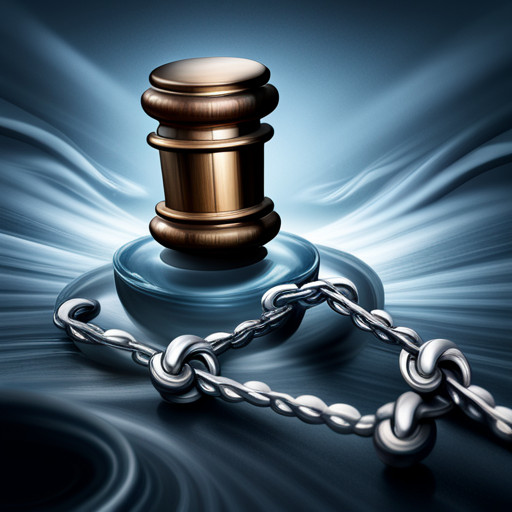
Key concepts in litigation related to environmental contamination encompass several principles, including negligence, nuisance, trespass, and the public trust doctrine.
Negligence refers to the failure of an entity to take necessary precautions in preventing pollution, leading to environmental harm.
Nuisance, on the other hand, involves an action that interferes with the enjoyment or use of a property due to pollution.
Trespass refers to the unauthorized entry of pollutants into a property, causing damage.
Lastly, the public trust doctrine asserts that certain resources like water are preserved for public use, and the government holds these in trust for the people.
Pollution compensation, a critical aspect of environmental litigation, pertains to the reparation paid by the polluting entity to those affected by the pollution.
This concept is often used to restore the environment to its pre-contamination state, or to compensate affected parties for damages incurred.
Legal precedents play a significant role in determining the nature and amount of such compensation.
Historical court decisions provide a framework for judges to assess liability and award compensation in contemporary cases.
Legal precedents in environmental contamination cases provide valuable insights into the interpretation and application of these key concepts.
They help to clarify the boundaries of negligence, nuisance, trespass, and the public trust doctrine.
Furthermore, they guide the calculation and awarding of pollution compensation.
Thus, understanding these principles and their application in previous cases is crucial for successful litigation in environmental contamination cases.
The Process of Filing a Water Pollution Lawsuit
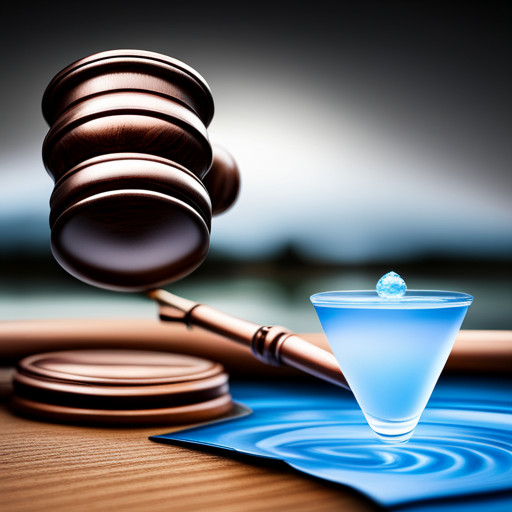
Initiating litigation in cases of environmental contamination, such as water pollution, involves a series of procedural steps, starting with the identification of the responsible party and culminating in the presentation of the case before a court. Legal loopholes and plaintiff challenges often complicate this process, making it essential to understand the steps involved in filing a water pollution lawsuit.
The first step is the identification of the party responsible for the pollution. This is often a complex process, given that contamination can come from multiple sources, and tracing it to a single entity can be challenging. Legal loopholes can also make it difficult to hold certain parties accountable, particularly in cases where the contamination is the result of indirect or non-point sources of pollution.
The second step involves collecting evidence to support the claim. This may include testing water samples, collecting photographic evidence, and garnering testimonies from experts. Plaintiff challenges often arise at this stage, with defendants contesting the validity or credibility of the evidence presented.
Finally, the case must be presented before a court. This stage involves the formulation of legal arguments, the presentation of evidence, and the examination of witnesses. Legal loopholes may be exploited by the defense to undermine the plaintiff's case, making it essential to anticipate and address these potential challenges.
In summary, the process of filing a water pollution lawsuit involves:
1. Identifying the responsible party and navigating legal loopholes
2. Collecting evidence and overcoming plaintiff challenges
3. Presenting the case in court and countering potential legal loopholes.
Understanding this process is crucial to ensure the successful litigation of water pollution cases.
Different Types of Water Contaminants and Their Legal Implications
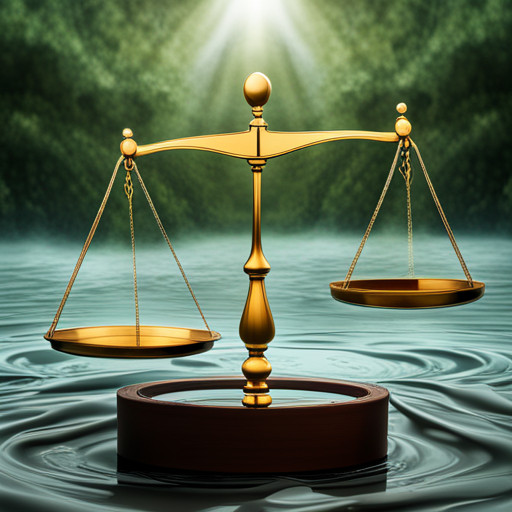
Understanding different types of contaminants and their implications is essential in the realm of environmental law, as each type can have distinct legal consequences. These contaminants, often classified under categories such as biological, chemical, and physical, can lead to varying degrees of environmental damage, human health risks, and legal implications.
The following table elucidates the nature of these contaminants, their typical sources, and potential legal implications:
| Contaminant Type | Typical Sources | Legal Implications |
|---|---|---|
| :----------------: | :---------------: | :------------------: |
| Biological | Sewage, agricultural runoff | Public health violations, breaches of environmental regulations |
| Chemical | Industrial waste, pesticides | Toxic tort claims, liability for cleanup costs |
| Physical | Sediment, heat | Infringements of water use rights, habitat destruction charges |
| Radiological | Nuclear plants, medical waste | Strict liability for hazardous activity, human rights violations |
| Microplastic | Consumer products, industrial processes | Emerging area of law, potential product liability claims |
Contaminant regulation loopholes, be it in classification, monitoring, or enforcement, can exacerbate the issue of water pollution. For instance, certain contaminants may not fall neatly into these categories, complicating regulatory efforts. International water pollution further adds another layer of complexity, as it involves cross-jurisdictional coordination and enforcement.
Thus, it becomes evident that the legal implications of water contaminants are multifaceted, encompassing public health, environmental protections, and international law. A thorough understanding of these aspects can aid in presenting a robust legal case, thereby ensuring the protection of water resources and public health.
Case Study: Notable Water Pollution Lawsuits in History
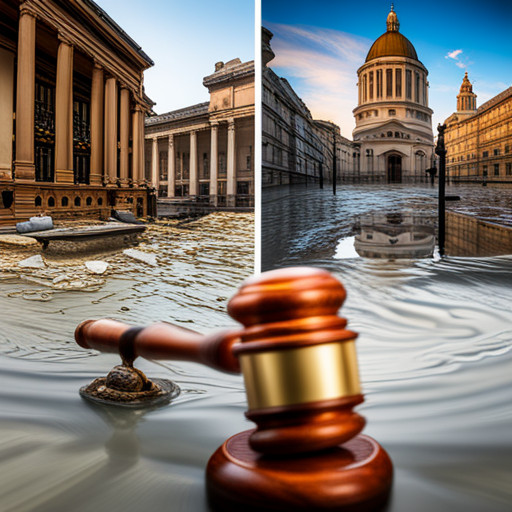
Historical litigation related to contamination incidents provides crucial insights into the interpretation and enforcement of environmental laws. These case studies elucidate not only the legal complexities involved but also the societal implications of such incidents. They offer a platform for rigorous pollution sources identification, thus enabling the allocation of responsibility and the initiation of accountability measures.
The corporate accountability debate gains momentum in the light of these lawsuits. It is in this context that three key historical lawsuits related to water pollution merit attention:
1. The Love Canal litigation (1980s): Sparked by the discovery of hazardous waste dumped by Hooker Chemical (now Occidental Petroleum), this case led to the creation of the Superfund Act in the United States, which obliges polluters to pay for the cleanup of their contamination.
2. The Minamata Disease lawsuit (1968): Chisso Corporation was found guilty of discharging methylmercury into the Minamata Bay, Japan, causing severe mercury poisoning (Minamata disease) among residents. This case accentuated the dire consequences of industrial pollution and instilled stricter regulations for corporate accountability.
3. The Bhopal Disaster lawsuit (1984): Union Carbide Corporation was held liable for the release of toxic gases in Bhopal, India, resulting in thousands of deaths and chronic health issues for survivors. This litigation underscored the need for stringent safety measures and corporate liability in the chemical industry.
These cases underscore the importance of stringent environmental legislation, precise identification of pollution sources, and robust corporate accountability mechanisms. They serve as a reminder of the profound and enduring impacts of industrial pollution on human health and the environment.
The Role of Expert Testimony in Water Pollution Lawsuits

In the realm of water pollution lawsuits, the role of expert testimony is paramount, as it has the potential to significantly influence the outcome of a case.
The process of selecting qualified experts, who possess both the requisite knowledge and experience in the field, is vital to ensure the reliability and credibility of the presented evidence.
Furthermore, the art of cross-examining these expert witnesses necessitates a careful exploration, as it can critically affect the weight of the testimony in the eyes of the court.
Importance of Expert Testimony
Expert testimony plays a crucial role in water pollution lawsuits, providing scientific evidence to support or challenge claims of environmental damage. It is the credibility of these experts that often influences the outcome of these cases.
The importance of expert testimony revolves around three main points:
1. Expert credibility: The reputation and credentials of the expert witness are scrutinized by the court, making the credibility of the expert of paramount importance.
2. Testimony influence: The expert's ability to communicate complex scientific information in an understandable way can significantly influence the court's decision.
3. Scientific Evidence: The expert's role is not only to provide opinion but also to present empirical data and research findings that can substantiate the claims or defenses in the lawsuit.
Selecting Qualified Experts
Having established the significant role of expert testimony in water pollution lawsuits, the focus now shifts to the expert selection criteria.
It is imperative to consider the expertise and qualifications of these individuals, ensuring they possess substantial knowledge and experience in the field of water pollution. The selection process must be rigorous, considering various factors such as academic credentials, professional experience, and the credibility of their previous testimonies.
In addition to expert selection, it is vital to consider lawsuit funding options. These can alleviate the financial strain associated with extensive legal proceedings. Funding options may include loans, legal aid, or insurance, each with their own benefits and limitations.
Thus, careful selection of experts and adequate funding are paramount to the successful pursuit of water pollution lawsuits.
Cross-Examining Expert Witnesses
Cross-examination of chosen expert witnesses serves as a crucial step in assessing the credibility and reliability of their testimonies in environmental litigation proceedings. Litigation strategies often focus on dissecting the witnesses' research methodologies, data interpretation, and relevance of qualifications in relation to the case at hand.
1. Witness Credibility: Involves evaluating the expert's professional background, past publications, and the acceptance of their theories or techniques in the scientific community.
2. Research Methodologies: Scrutinizing the data collection techniques, statistical analyses, and the overall scientific rigor employed to ensure unbiased results.
3. Relevancy of Qualifications: Concerns the relevance of the expert's area of expertise to the specifics of the case, which could significantly impact the weight of their testimony.
Potential Defenses in Water Pollution Lawsuits

Potential defenses in water pollution lawsuits often hinge on demonstrating compliance with existing regulations or disputing the plaintiff's evidence of harm. One essential aspect of these defenses is polluter identification, crucial in establishing responsibility for the contamination. Accurately identifying the polluter can be complicated, involving technical analysis and expert opinion to trace the pollution back to its source. This process, known as contamination source tracing, employs scientific methodologies to demonstrate the origin and pathway of the contaminants.
In most jurisdictions, the defendant may argue regulatory compliance as a defense. If strict adherence to applicable environmental laws and regulations can be demonstrated, the defendant can argue that no further liability should be incurred. However, this defense relies heavily on the interpretation of complex environmental legislation and may not absolve the defendant if the plaintiff can prove that the pollution still resulted in harm.
Disputing the plaintiff's evidence of harm is another commonly employed defense. This involves challenging the causation link between the alleged pollution and the harm suffered by the plaintiff. It requires rigorous examination of the plaintiff's evidence, possibly involving expert witnesses to provide alternative explanations for the observed harm.
Lastly, the defendant may also raise the defense of intervening causes. This defense asserts that the pollution and harm were due to an unforeseen event or third party, breaking the causal chain between the defendant's actions and the alleged harm. This defense, however, requires the defendant to prove that the intervening cause was not foreseeable and could not have been prevented.
The Impact of Water Pollution Lawsuits on Environmental Policy
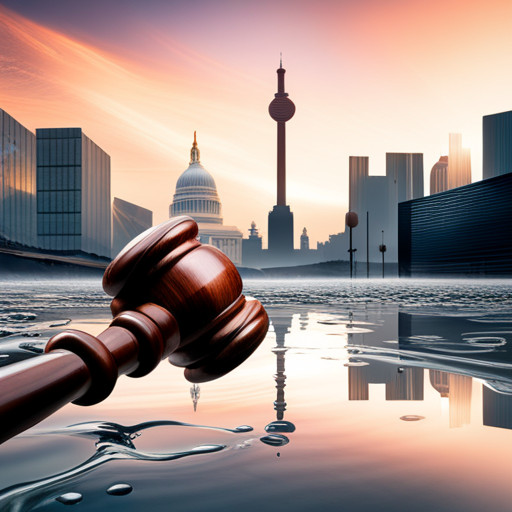
The impact of water pollution lawsuits on environmental policy necessitates an in-depth exploration, with particular emphasis on policy changes post-lawsuits and the influence of these lawsuits on legislation.
This discussion will examine the modifications in environmental policy, tracing the trajectory of change that often follows high profile legal disputes over water pollution.
Furthermore, it will delve into the ways in which such lawsuits have directly or indirectly influenced legislative amendments, thereby shaping the regulatory landscape of environmental protection.
Policy Changes Post-Lawsuits
Post-lawsuit policy changes often involve implementing stricter regulations and enhancing enforcement mechanisms to prevent further instances of water pollution. These alterations are typically influenced by the litigation costs incurred during legal battles and heightened public awareness of environmental issues.
1. Litigation Costs: The financial burden associated with lawsuits often compels entities to reform their practices. High litigation costs act as a deterrent, fostering a culture of compliance.
2. Public Awareness: Increased public consciousness aids in the enforcement of regulations. Public scrutiny often pushes for policy change.
3. Policy Amendments: Post-lawsuit, policies are frequently updated to include stricter regulations and penalties. This mitigates future risks and reinforces the importance of environmental preservation.
In essence, legal ramifications and societal pressure interplay to shape post-lawsuit policies, ultimately aiming to reduce water pollution.
Lawsuits Influencing Legislation
After deliberation on policy changes post-lawsuits, it is essential to shift focus towards the profound influence of these lawsuits on legislation. Historically, it is observed that lawsuits often serve as catalysts for legislative amendments, particularly in closing legislative loopholes that allow environmentally detrimental practices. Legislative loopholes can act as shields for violators, preventing them from facing legal consequences. The uncovering and closing of such loopholes are vital for the enhancement of water quality regulations. Furthermore, these legal actions can have international repercussions, encouraging similar lawsuits and legislative progress in other countries. The table below provides a summary of the impact of lawsuits on legislation.
| Effect of Lawsuits on Legislation | Global Impact |
| Closing legislative loopholes | Encouraging international lawsuits |
| Enhancing water quality regulations | Influencing legislative progress globally |
Tips for Preparing a Water Pollution Lawsuit

Understanding the intricacies of environmental law is crucial when preparing a water pollution lawsuit. This complex legal field requires a comprehensive understanding of the regulations surrounding water pollution and the legal remedies available to those affected. A thorough grasp of the available lawsuit financing options and community involvement strategies is also essential.
These financing options often include traditional loans, litigation financing, or crowdfunding efforts. Community involvement strategies may range from public awareness campaigns to partnerships with local environmental groups. The end goal is to garner support, raise funds, and increase the chances of a successful lawsuit.
To better prepare for a water pollution lawsuit, consider the following:
1. Understanding Environmental Laws and Regulations: Knowledge of the local, state, and federal laws concerning water pollution is vital. It provides the basis for the lawsuit and helps identify the legal avenues available.
2. Exploring Financing Options: Lawsuits can be costly. Identifying available financing options early can ensure resources are available when needed. This could include exploring litigation financing companies or setting up crowdfunding campaigns.
3. Engaging the Community: Building a strong community support base can bolster the lawsuit. This can be achieved through public awareness campaigns, partnerships with environmental organizations, or by mobilizing local residents.
Frequently Asked Questions
What Are Some Common Health Effects of Exposure to Water Pollution?
Exposure to water pollution may lead to serious health effects, including gastrointestinal diseases, reproductive problems, and neurological disorders. These effects are often due to the ingestion of harmful pollutants from various pollution sources.
Strategies for contamination prevention, such as water treatment and pollution laws, are crucial to reduce the risk of these health effects.
Further research is required to fully understand the long-term health impacts of exposure to water pollution.
How Long Does a Typical Water Pollution Lawsuit Take, From Filing to Resolution?
The duration of water pollution lawsuits, from inception to resolution, is contingent upon myriad factors, including the complexity of the case, the legal teams involved, and the court's schedule.
Notwithstanding these variables, the plaintiff's burden to amass substantial evidence often prolongs the process. Thus, it is not uncommon for such cases to span several years.
While this may inflate lawsuit costs, it is a necessary investment towards achieving environmental justice and safeguarding public health.
Are There Any International Laws or Regulations Governing Water Pollution?
Yes, international regulations governing water pollution exist.
The International Maritime Organization (IMO) sets global standards for shipping and navigation, including pollution penalties.
Moreover, the United Nations Environment Programme (UNEP) and World Health Organization (WHO) provide guidelines and standards on water quality and pollution.
Enforcement, however, varies by country and is contingent on the adoption and implementation of these standards at a national level.
What Happens if a Water Pollution Lawsuit Is Lost? Is There an Option to Appeal?
In the event of a lost lawsuit pertaining to water pollution, the appeal process may be utilized as a legal recourse. This process involves a higher court reviewing the decision of a lower court.
The legal consequences of a lost lawsuit could include financial penalties or enforcement actions to rectify the pollution issue. However, the success of an appeal can vary and is dependent on the particular circumstances of each case.
Can a Private Individual File a Lawsuit for Water Pollution, or Does It Need to Be a Group or Organization?
In relation to water pollution lawsuits, both private individuals and groups or organizations possess legal standing to file such suits. This legal principle is supported by numerous legal precedents.
The threshold requirement is the ability to show a direct, personal harm resulting from pollution sources. Therefore, the claimant's status as an individual or group does not preclude the initiation of a lawsuit, provided sufficient evidence of harm from water pollution can be demonstrated.
Conclusion
In conclusion, water pollution lawsuits have significant implications for environmental policy. They potentially lead to stricter regulations and increased accountability. They underscore the importance of understanding the intricacies of environmental law and the role of various stakeholders, including the EPA and expert witnesses.
Do we not owe it to future generations to protect our water resources?
This careful examination of water pollution lawsuits demonstrates the power of legal action in the fight against environmental degradation.

This post has been generated by AI and was not reviewed by editors. This is Not legal advice. Please consult with an attorney.




